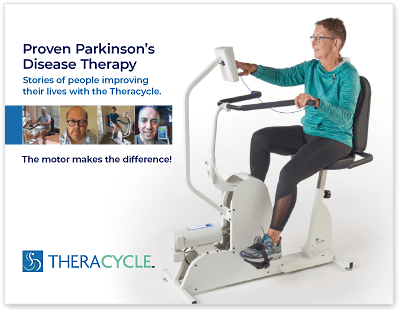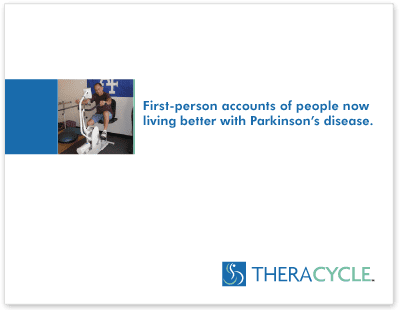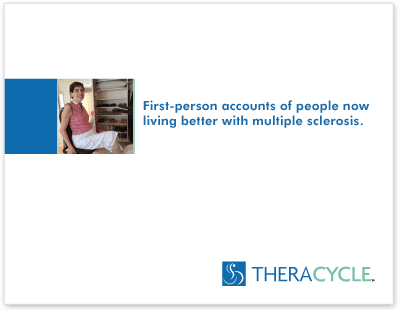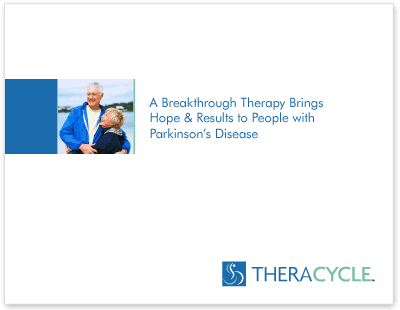- ›
- Resources
- ›
- Parkinson’s Disease in Patients
- ›
- UPDRS Scale
UPDRS Scale
Unified Parkinson Disease Rating Scale
The UPDRS scale refers to Unified Parkinson Disease Rating Scale, and it is a rating tool used to gauge the course of Parkinson’s disease in patients. The UPDRS scale has been modified over the years by several medical organizations, and continues to be one of the bases of treatment and research in PD clinics. The UPDRS scale includes series of ratings for typical Parkinson’s symptoms that cover all of the movement hindrances of Parkinson’s disease. The UPDRS scale consists of the following five segments: 1) Mentation, Behavior, and Mood, 2) ADL, 3) Motor sections, 4) Modified Hoehn and Yahr Scale, and 5) Schwab and England ADL scale. Each answer to the scale is evaluated by a medical professional that specializes in Parkinson’s disease during patient interviews. Some sections of the UPDRS scale require multiple grades assigned to each extremity with a possible maximum of 199 points. A score of 199 on the UPDRS scale represents the worst (total disability) with a score of zero representing (no disability).
UNIFIED PARKINSON’S DISEASE RATING SCALE (UPDRS)
I. MENTATION, BEHAVIOR AND MOOD
1. Intellectual Impairment
0 = None.
1 = Mild. Consistent forgetfulness with partial recollection of events and no other difficulties.
2 = Moderate memory loss, with disorientation and moderate difficulty handling complex problems. Mild but definite impairment of function at home with need of occasional prompting.
3 = Severe memory loss with disorientation for time and often to place. Severe impairment in handling problems.
4 = Severe memory loss with orientation preserved to person only. Unable to make judgements or solve problems. Requires much help with personal care. Cannot be left alone at all.
2. Thought Disorder (Due to dementia or drug intoxication)
0 = None.
1 = Vivid dreaming.
2 = “Benign” hallucinations with insight retained.
3 = Occasional to frequent hallucinations or delusions; without insight; could interfere with daily activities.
4 = Persistent hallucinations, delusions, or florrid psychosis. Not able to care for self.
3. Depression
0 = None.
1 = Periods of sadness or guilt greater than normal, never sustained for days or weeks.
2 = Sustained depression (1 week or more).
3 = Sustained depression with vegetative symptoms (insomnia, anorexia, weight loss, loss of interest).
4 = Sustained depression with vegetative symptoms and suicidal thoughts or intent.
4. Motivation/Initiative
0 = Normal.
1 = Less assertive than usual; more passive.
2 = Loss of initiative or disinterest in elective (nonroutine) activities.
3 = Loss of initiative or disinterest in day to day (routine) activities.
4 = Withdrawn, complete loss of motivation.
II. ACTIVITIES OF DAILY LIVING (for both “on” and “off”)
5. Speech
0 = Normal.
1 = Mildly affected. No difficulty being understood.
2 = Moderately affected. Sometimes asked to repeat statements.
3 = Severely affected. Frequently asked to repeat statements.
4 = Unintelligible most of the time.
6. Salivation
0 = Normal.
1 = Slight but definite excess of saliva in mouth; may have nighttime drooling.
2 = Moderately excessive saliva; may have minimal drooling.
3 = Marked excess of saliva with some drooling.
4 = Marked drooling, requires constant tissue or handkerchief.
7. Swallowing
0 = Normal.
1 = Rare choking.
2 = Occasional choking.
3 = Requires soft food.
4 = Requires NG tube or gastrotomy feeding.
8. Handwriting
0 = Normal.
1 = Slightly slow or small.
2 = Moderately slow or small; all words are legible.
3 = Severely affected; not all words are legible.
4 = The majority of words are not legible.
9. Cutting food and handling utensils
0 = Normal.
1 = Somewhat slow and clumsy, but no help needed.
2 = Can cut most foods, although clumsy and slow; some help needed.
3 = Food must be cut by someone, but can still feed slowly.
4 = Needs to be fed.
10. Dressing
0 = Normal.
1 = Somewhat slow, but no help needed.
2 = Occasional assistance with buttoning, getting arms in sleeves.
3 = Considerable help required, but can do some things alone.
4 = Helpless.
11. Hygiene
0 = Normal.
1 = Somewhat slow, but no help needed.
2 = Needs help to shower or bathe; or very slow in hygienic care.
3 = Requires assistance for washing, brushing teeth, combing hair, going to bathroom.
4 = Foley catheter or other mechanical aids.
12. Turning in bed and adjusting bed clothes
0 = Normal.
1 = Somewhat slow and clumsy, but no help needed.
2 = Can turn alone or adjust sheets, but with great difficulty.
3 = Can initiate, but not turn or adjust sheets alone.
4 = Helpless.
12. Falling (unrelated to freezing)
0 = None.
1 = Rare falling.
2 = Occasionally falls, less than once per day.
3 = Falls an average of once daily.
4 = Falls more than once daily.
13. Freezing when walking
0 = None.
1 = Rare freezing when walking; may have starthesitation.
2 = Occasional freezing when walking.
3 = Frequent freezing. Occasionally falls from freezing.
4 = Frequent falls from freezing.
15. Walking
0 = Normal.
1 = Mild difficulty. May not swing arms or may tend to drag leg.
2 = Moderate difficulty, but requires little or no assistance.
3 = Severe disturbance of walking, requiring assistance.
4 = Cannot walk at all, even with assistance.
16. Tremor (Symptomatic complaint of tremor in any part of body.)
0 = Absent.
1 = Slight and infrequently present.
2 = Moderate; bothersome to patient.
3 = Severe; interferes with many activities.
4 = Marked; interferes with most activities.
17. Sensory complaints related to parkinsonism
0 = None.
1 = Occasionally has numbness, tingling, or mild aching.
2 = Frequently has numbness, tingling, or aching; not distressing.
3 = Frequent painful sensations.
4 = Excruciating pain.
III. MOTOR EXAMINATION
18. Speech
0 = Normal.
1 = Slight loss of expression, diction and/or volume.
2 = Monotone, slurred but understandable; moderately impaired.
3 = Marked impairment, difficult to understand.
4 = Unintelligible.
19. Facial Expression
0 = Normal.
1 = Minimal hypomimia, could be normal “Poker Face”.
2 = Slight but definitely abnormal diminution of facial expression.
3 = Moderate hypomimia; lips parted some of the time.
4 = Masked or fixed facies with severe or complete loss of facial expression;
lips parted 1/4 inch or more.
20. Tremor at rest (head, upper and lower extremities)
0 = Absent.
1 = Slight and infrequently present.
2 = Mild in amplitude and persistent. Or moderate in amplitude, but only intermittently present.
3 = Moderate in amplitude and present most of the time.
4 = Marked in amplitude and present most of the time.
21. Action or Postural Tremor of hands
0 = Absent.
1 = Slight; present with action.
2 = Moderate in amplitude, present with action.
3 = Moderate in amplitude with posture holding as well as action.
4 = Marked in amplitude; interferes with feeding.
22. Rigidity (Judged on passive movement of major joints with patient relaxed in sitting position. Cogwheeling to be ignored.)
0 = Absent.
1 = Slight or detectable only when activated by mirror or other movements.
2 = Mild to moderate.
3 = Marked, but full range of motion easily achieved.
4 = Severe, range of motion achieved with difficulty.
23. Finger Taps (Patient taps thumb with index finger in rapid succession.)
0 = Normal.
1 = Mild slowing and/or reduction in amplitude.
2 = Moderately impaired. Definite and early fatiguing. May have occasional arrests in movement.
3 = Severely impaired. Frequent hesitation in initiating movements or arrests in ongoing movement.
4 = Can barely perform the task.
24. Hand Movements (Patient opens and closes hands in rapid succesion.)
0 = Normal.
1 = Mild slowing and/or reduction in amplitude.
2 = Moderately impaired. Definite and early fatiguing. May have occasional arrests in movement.
3 = Severely impaired. Frequent hesitation in initiating movements or arrests in ongoing movement.
4 = Can barely perform the task.
25. Rapid Alternating Movements of Hands (Pronation-supination movements of hands, vertically and horizontally, with as large an amplitude as possible, both hands simultaneously.)
0 = Normal.
1 = Mild slowing and/or reduction in amplitude.
2 = Moderately impaired. Definite and early fatiguing. May have occasional arrests in movement.
3 = Severely impaired. Frequent hesitation in initiating movements or arrests in ongoing movement.
4 = Can barely perform the task.
26. Leg Agility (Patient taps heel on the ground in rapid succession picking up entire leg. Amplitude should be at least 3 inches.)
0 = Normal.
1 = Mild slowing and/or reduction in amplitude.
2 = Moderately impaired. Definite and early fatiguing. May have occasional arrests in movement.
3 = Severely impaired. Frequent hesitation in initiating movements or arrests in ongoing movement.
4 = Can barely perform the task.
27. Arising from Chair (Patient attempts to rise from a straightbacked chair, with arms folded across chest.)
0 = Normal.
1 = Slow; or may need more than one attempt.
2 = Pushes self up from arms of seat.
3 = Tends to fall back and may have to try more than one time, but can get up without help.
4 = Unable to arise without help.
28. Posture
0 = Normal erect.
1 = Not quite erect, slightly stooped posture; could be normal for older person.
2 = Moderately stooped posture, definitely abnormal; can be slightly leaning to one side.
3 = Severely stooped posture with kyphosis; can be moderately leaning to one side.
4 = Marked flexion with extreme abnormality of posture.
29. Gait
0 = Normal.
1 = Walks slowly, may shuffle with short steps, but no festination (hastening steps) or propulsion.
2 = Walks with difficulty, but requires little or no assistance; may have some festination, short steps, or propulsion.
3 = Severe disturbance of gait, requiring assistance.
4 = Cannot walk at all, even with assistance.
30. Postural Stability (Response to sudden, strong posterior displacement produced by pull on shoulders while patient erect with eyes open and feet slightly apart. Patient is prepared.)
0 = Normal.
1 = Retropulsion, but recovers unaided.
2 = Absence of postural response; would fall if not caught by examiner.
3 = Very unstable, tends to lose balance spontaneously.
4 = Unable to stand without assistance.
31. Body Bradykinesia and Hypokinesia (Combining slowness, hesitancy, decreased armswing, small amplitude, and poverty of movement in general.)
0 = None.
1 = Minimal slowness, giving movement a deliberate character; could be normal for some persons. Possibly reduced amplitude.
2 = Mild degree of slowness and poverty of movement which is definitely abnormal. Alternatively, some reduced amplitude.
3 = Moderate slowness, poverty or small amplitude of movement.
4 = Marked slowness, poverty or small amplitude of movement.
IV COMPLICATIONS OF THERAPY (In the past week)
A. DYSKINESIAS
32. Duration: What proportion of the waking day are dyskinesias present? (Historical information.)
0 = None.
1 = 1-25% of day.
2 = 26-50% of day.
3 = 51-75% of day.
4 = 76-100% of day.
33. Disability: How disabling are the dyskinesias? (Historical information; may be modified by office examination.)
0 = Not disabling.
1 = Mildly disabling.
2 = Moderately disabling.
3 = Severely disabling.
4 = Completely disabled.
34. Painful Dyskinesias: How painful are the dyskinesias?
0 = No painful dyskinesias.
1 = Slight.
2 = Moderate.
3 = Severe.
4 = Marked.
35. Presence of Early Morning Dystonia (Historical information.)
0 = No
1 = Yes
B. CLINICAL FLUCTUATIONS
36. Are “off” periods predictable?
0 = No
1 = Yes
37. Are “off” periods unpredictable?
0 = No
1 = Yes
38. Do “off” periods come on suddenly, within a few seconds?
0 = No
1 = Yes
39. What proportion of the waking day is the patient “off” on average?
0 = None
1 = 1-25% of day.
2 = 26-50% of day.
3 = 51-75% of day.
4 = 76-100% of day.
C. OTHER COMPLICATIONS
40. Does the patient have anorexia, nausea, or vomiting?
0 = No
1 = Yes
41. Any sleep disturbances, such as insomnia or hypersomnolence?
0 = No
1 = Yes
42. Does the patient have symptomatic orthostasis? (Record the patient’s blood pressure, height and weight on the scoring form)
0 = No
1 = Yes
V. MODIFIED HOEHN AND YAHR STAGING
STAGE 0 = No signs of disease.
STAGE 1 = Unilateral disease.
STAGE 1.5 = Unilateral plus axial involvement.
STAGE 2 = Bilateral disease, without impairment of balance.
STAGE 2.5 = Mild bilateral disease, with recovery on pull test.
STAGE 3 = Mild to moderate bilateral disease; some postural instability; physically independent.
STAGE 4 = Severe disability; still able to walk or stand unassisted.
STAGE 5 = Wheelchair bound or bedridden unless aided.
VI. SCHWAB AND ENGLAND ACTIVITIES OF DAILY LIVING SCALE
100% = Completely independent. Able to do all chores without slowness, difficulty or impairment. Essentially normal. Unaware of any difficulty.
90% = Completely independent. Able to do all chores with some degree of slowness, difficulty and impairment. Might take twice as long. Beginning to be aware of difficulty.
80% = Completely independent in most chores. Takes twice as long. Conscious of difficulty and slowness.
70% = Not completely independent. More difficulty with some chores. Three to four times as long in some. Must spend a large part of the day with chores.
60% = Some dependency. Can do most chores, but exceedingly slowly and with much effort. Errors; some impossible.
50% = More dependent. Help with half, slower, etc. Difficulty with everything.
40% = Very dependent. Can assist with all chores, but few alone.
30% = With effort, now and then does a few chores alone or begins alone. Much help needed.
20% = Nothing alone. Can be a slight help with some chores. Severe invalid.
10% = Totally dependent, helpless. Complete invalid.
0% = Vegetative functions such as swallowing, bladder and bowel functions are not functioning. Bedridden.
Source:
Fahn S, Elton R, Members of the UPDRS Development Committee.
In: Fahn S, Marsden CD, Calne DB, Goldstein M, eds.
Recent Developments in Parkinson’s Disease, Vol 2. Florham Park, NJ. Macmillan Health Care Information 1987, pp 15 3-163, 293-304
For more information, including downloadable forms, visit:
http://www.mdvu.org/library/ratingscales/pd/







